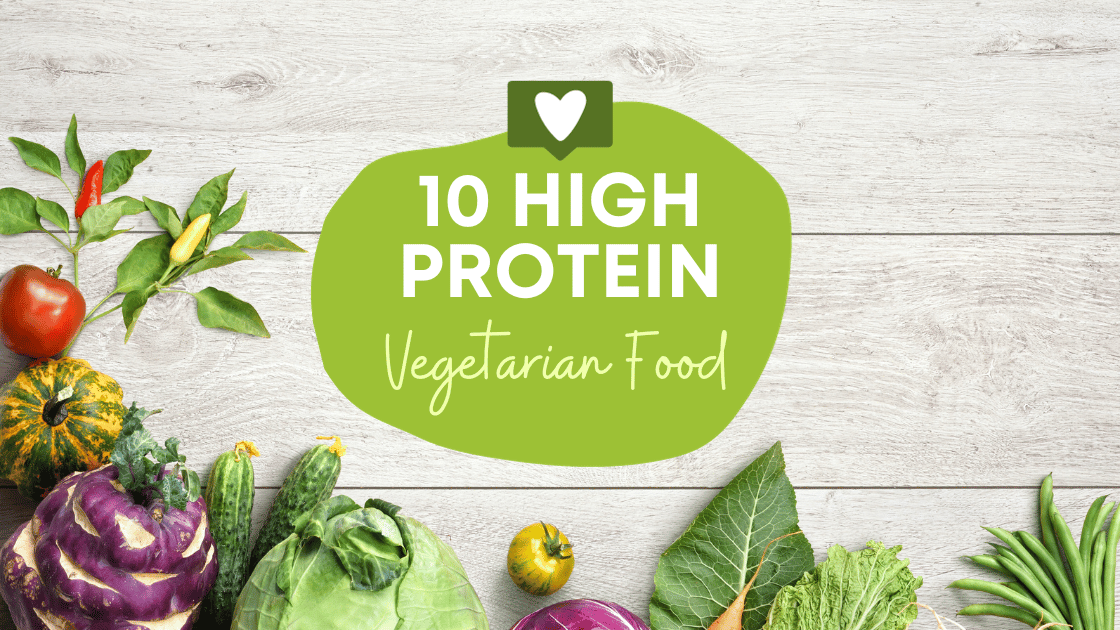Omega-6 Fatty Acids: Health Benefits and Rich foods

Introduction
Omega-6 fatty acids are essential components of a healthy diet, playing a crucial role in various bodily functions. In this article, we will delve into the significance of omega-6 fatty acids, exploring their health benefits, food sources, and the ongoing discussions surrounding their impact on heart disease.
Key topics covered in this article:
- Health benefits of omega-6 fatty acids
- Sources of omega-6 fatty acids
- Balancing omega-6 intake with other essential nutrients
- The controversy surrounding omega-6s and their association with heart disease.
Throughout this comprehensive guide, we will provide valuable insights to help you understand the role of omega-6 fatty acids in promoting overall well-being and maintaining a balanced diet.
Understanding Omega-6 Fatty Acids
Omega-6 fatty acids are essential polyunsaturated fatty acids that play a vital role in the body’s functioning. These fatty acids are classified as essential because the human body cannot produce them on its own, necessitating their intake through dietary sources or supplements.
The Importance of Omega-6 Fatty Acids
Alongside omega-3 fatty acids, omega-6s are crucial for various physiological processes, including:
- Cell membrane structure
- Brain function
- Muscle growth
The Balance Between Omega-6 and Omega-3 Fatty Acids
The balance between omega-6 and omega-3 fatty acids is paramount for promoting optimal health. While both types of fatty acids offer distinct benefits, an excessive intake of omega-6s compared to omega-3s can lead to inflammation and other health concerns. Therefore, maintaining a balanced ratio of these essential fatty acids is essential for supporting overall well-being.
Making Informed Dietary Choices
It’s important to note that omega-6 fatty acids are not inherently detrimental to health; rather, it’s the imbalance between omega-6s and omega-3s that can potentially lead to adverse effects. By understanding the roles of these essential fatty acids and their interplay within the body, individuals can make informed dietary choices to ensure a harmonious intake of both omega-6 and omega-3 fatty acids for optimal health and well-being.
The Link Between Omega-6 Fatty Acids and Heart Disease
Omega-6 fatty acids have sparked debates over their potential impact on heart health. Some studies suggest a possible connection between high omega-6 intake and an increased risk of heart disease, raising concerns about their consumption. However, it’s important to dig deeper into the research to fully understand this relationship.
Mixed Findings in Recent Studies
Recent studies have looked into the link between omega-6 fatty acids and heart disease, but the results have been inconsistent, adding to the ongoing discussion. While some findings indicate a potential negative effect of high omega-6 intake on heart health, other studies have not found a clear correlation.
The Need for Further Exploration
Given the complexity of this topic, more research is needed to unravel the true effects of omega-6 fatty acids on heart disease risk. It’s crucial to critically evaluate the available evidence and delve into the nuances of these studies to get a better grasp of how omega-6 fatty acids may or may not contribute to heart health.
Implications for Dietary Choices
Understanding the evolving landscape of research on omega-6 fatty acids and heart disease can help us make informed decisions about our diets and overall well-being. As new findings continue to emerge, it’s important to stay updated on advancements in this area, taking a proactive approach to health that incorporates the latest scientific knowledge.
Potential Health Benefits of Omega-6 Fatty Acids
Omega-6 fatty acids have a significant role in promoting overall health and well-being. Although the ideal intake of omega-6s is still a topic of debate, studies suggest that they offer several potential health benefits:
1. Brain Health
Omega-6 fatty acids are vital for brain development and function. They are an important part of the cell membranes in the brain and assist in communication between brain cells. Research indicates that sufficient levels of omega-6s may enhance cognitive function, memory, and mood.
2. Hormone Synthesis
Omega-6s participate in hormone production, including those that regulate various bodily processes like metabolism, growth, and reproduction. These fatty acids support the creation of hormones such as prostaglandins, which have a crucial role in regulating inflammation and blood clotting.
3. Skin Integrity
Maintaining healthy skin involves the contribution of omega-6 fatty acids to its structure and strength. They aid in the formation of a protective barrier on the skin’s surface, preventing loss of moisture and safeguarding against external factors like UV radiation and pollutants. Consuming sufficient omega-6s may assist in promoting elasticity and reducing dryness in the skin.
4. Inflammatory Response
Omega-6s help regulate inflammatory responses within the body. Although inflammation is a necessary immune response to injury or infection, prolonged inflammation can contribute to various diseases such as heart disease, diabetes, and arthritis. By influencing the production of pro-inflammatory and anti-inflammatory molecules, omega-6 fatty acids play a role in modulating inflammation.
It’s important to keep in mind that maintaining a proper balance between omega-6s and omega-3s is crucial for optimal health. Both types of fatty acids work together in the body, and an imbalance can have negative effects on health.
Food Sources: Adding Omega-6 Fatty Acids to Your Diet
Omega-6 fatty acids are important for overall health, and you can include them in your diet by eating certain foods. Here are some things to know:
Dietary Sources
Omega-6 fatty acids are found in many different foods, including:
- Walnuts
- Grapeseed oil
- Pine nuts
- Sunflower seeds and sunflower oil
- Corn oil
- Walnut oil
- Cottonseed oil
- Soybean oil
- Mayonnaise
- Almonds
- Tofu
- Vegetable shortening
Recommended Daily Intake Levels
The amount of omega-6 fatty acids you need each day depends on your age and gender. Health authorities like the National Institutes of Health (NIH) and the U.S. Department of Agriculture (USDA) provide recommendations. It’s important to follow these guidelines to make sure you’re getting the right balance of nutrients.
Balancing Omega-6-rich Foods with Omega-3 Sources
When you include foods high in omega-6 fatty acids in your diet, it’s also important to include foods that are high in omega-3 fatty acids. This helps maintain a healthy balance between the two. Some examples of omega-3-rich foods are fatty fish, flaxseeds, seaweed, and certain nuts.
By paying attention to where omega-6 fatty acids come from and how much you need, you can easily include them in your diet while still getting all the other nutrients you need.
Understanding Omega-6 Fatty Acids in Cooking Oils and Other Fats
Omega-6 fatty acids are commonly found in cooking oils and other fats. Understanding the presence of omega-6s in these food sources is essential for maintaining a balanced diet. Here are some key points to consider:
1. Common cooking oils
Many cooking oils, such as corn oil, soybean oil, cottonseed oil, and sunflower oil, contain high levels of omega-6 fatty acids. These oils are widely used in various culinary applications, including frying, sautéing, and salad dressings.
2. Choosing healthier options
While these cooking oils provide flavor and versatility in cooking, it’s important to choose healthier options that offer a balanced fatty acid profile. Look for oils that contain both omega-6 and omega-3 fatty acids or have a higher ratio of omega-3s to omega-6s. Examples include flaxseed oil, walnut oil, and canola oil.
3. Avoiding excessive consumption
It’s worth noting that excessive consumption of omega-6-rich cooking oils may contribute to an imbalance between omega-6 and omega-3 fatty acids in the diet. This imbalance can potentially promote inflammation and increase the risk of certain health issues. Therefore, moderation is key when incorporating these oils into your cooking.
4. Considering alternative fats
In addition to cooking oils, there are other sources of dietary fats that also contain omega-6 fatty acids. Nuts, seeds, and their derived products like nut butters are excellent alternatives to cooking oils. For example, almond butter and tahini provide healthy fats along with other beneficial nutrients.
5. Diversifying your fat sources
To maintain a healthy balance between omega-6 and omega-3 fatty acids, it’s crucial to diversify your fat sources in the diet. Incorporating foods rich in omega-3s, such as fatty fish (salmon, sardines), chia seeds, and hemp seeds, can help offset the higher intake of omega-6s from cooking oils and other fats.
By being mindful of the presence of omega-6 fatty acids in cooking oils and other fats, you can make informed choices that promote a balanced intake of essential fatty acids. Remember to prioritize variety, moderation, and balance in your overall dietary fat consumption for optimal health.
The Importance of Maintaining a Healthy Omega Balance
Omega-6 fatty acids are important for the body’s inflammatory processes, but they need to be balanced with omega-3 fatty acids for optimal health. Here’s why it’s crucial to maintain the right ratio between these two types of fats:
1. Inflammatory Response
Omega-6s are needed to kickstart the body’s inflammatory response when there’s an injury or infection. However, having too much omega-6s compared to omega-3s can lead to chronic inflammation, which is linked to various diseases like heart disease, cancer, and arthritis.
2. Brain Health
Both omega-6s and omega-3s are essential for brain function and development. Having a balanced intake of these fats supports cognitive function and may lower the risk of neurodegenerative diseases.
3. Heart Health
Maintaining the right balance between omega-6s and omega-3s is connected to a reduced risk of heart disease. When these fats are imbalanced, it can contribute to cardiovascular issues like high blood pressure and clot formation.
To achieve a healthy omega balance in your diet, here are some practical tips:
- Increase Omega-3 Intake: Include sources of omega-3 fatty acids in your meals regularly, such as fatty fish (salmon, mackerel), chia seeds, flaxseeds, and walnuts.
- Limit Omega-6-Rich Oils: Reduce the use of oils that are high in omega-6 fats, like corn oil and soybean oil, when cooking or preparing food.
- Choose Balanced Cooking Oils: Opt for oils that have a healthier balance of omega-6s to omega-3s, such as olive oil or avocado oil.
- Diversify Your Fat Sources: Add different food sources of unsaturated fats to your diet, like avocados, nuts, and seeds.
By being mindful of your dietary intake and making informed choices about the fats you consume, you can work towards achieving a balanced ratio of omega-6s to omega-3s that supports overall health and well-being.
Potential Risks of Excessive Omega-6 Consumption
Excessive intake of omega-6 fatty acids can potentially lead to adverse effects on inflammation levels and chronic disease risk. While omega-6 fatty acids are essential for various bodily functions, an imbalance in the ratio of omega-6s to omega-3s may contribute to health concerns. Some potential risks associated with excessive omega-6 consumption include:
- Inflammatory Responses: High intake of omega-6 fatty acids has been linked to increased levels of pro-inflammatory molecules in the body. Chronic inflammation is associated with a higher risk of conditions such as heart disease, diabetes, and certain types of cancer.
- Impact on Immune Function: Imbalanced levels of omega-6s may affect the body’s immune response, potentially leading to overactive inflammatory processes that could contribute to autoimmune disorders.
- Chronic Disease Risk: Research suggests that a disproportionately high intake of omega-6 fats in relation to omega-3 fats may elevate the risk of developing chronic diseases, including cardiovascular issues and inflammatory conditions.
Maintaining a balanced intake of omega-6 fatty acids alongside omega-3s is essential for overall health and well-being. While moderate consumption of omega-6-rich foods is important, excessive reliance on sources high in omega-6s without adequate omega-3 intake may pose health risks. It’s crucial to be mindful of dietary choices and strive for a harmonious balance between different types of essential fatty acids.
Omega-6 Supplements: Should You Consider Them?
Omega-6 supplements are a topic of interest for individuals looking to optimize their intake of essential fatty acids. Here are some key points to consider when contemplating the use of omega-6 supplements:
Consulting a Healthcare Professional
Before incorporating omega-6 supplements into your routine, it’s crucial to seek guidance from a healthcare professional. They can evaluate your specific dietary needs and potential deficiencies, offering personalized recommendations.
Potential Benefits
Omega-6 supplements may be beneficial for individuals who have identified a deficiency or imbalance in their essential fatty acid intake. These supplements can help support overall health and contribute to the body’s essential functions.
Precautions
While omega-6 supplements can offer advantages, it’s essential to be mindful of the quality and dosage. Excessive intake of omega-6 fatty acids can lead to an imbalance with omega-3s, potentially impacting inflammatory responses and overall well-being.
The decision to consider omega-6 supplements should be approached with careful consideration and professional guidance. By understanding the potential benefits and being aware of necessary precautions, individuals can make informed choices regarding their essential fatty acid intake.
Conclusion
The role of omega-6 fatty acids in supporting overall health is undeniable. When consumed as part of a balanced diet, omega-6s contribute to essential bodily functions and offer various health benefits.
However, maintaining a balanced approach to their consumption is crucial for reaping their advantages without tipping the scale towards potential risks. By incorporating a diverse range of omega-6-rich foods into your diet and being mindful of the omega-3 to omega-6 ratio, you can harness the power of these essential fatty acids while minimizing the likelihood of adverse effects.
Remember, moderation and variety are key when it comes to optimizing your intake of omega-6 fatty acids for overall well-being and health.








